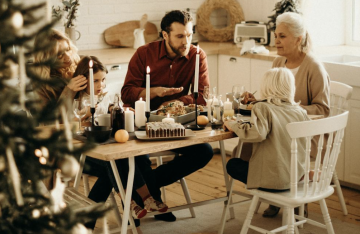It’s amazing what can rush through your mind in just three minutes–especially while you are awaiting the results of a pregnancy test. Alone and totally ill-prepared for motherhood, you offer up a quick prayer to the Heavens for just one pink line to appear. But, just in case, you begin preparing for the fact that you may, indeed, be pregnant.
An unexpected pregnancy may feel like a disaster, marking the end of life as you know it–but it doesn’t have to be. You can place your baby up for adoption and, in doing so, give him or her a wonderful life, while providing a childless couple with a child to love. If you are considering the possibility of adoption, here are a few logical steps on how to give a baby up for adoption.
Step 1: Explore Your Feelings
Before making any decisions, it is important for you to fully explore your situation. Can you afford to keep your child? Do you have a support system to fall back on? What option is most congruent with your personal beliefs?
If you are leaning towards placing your baby up for adoption, you will need to be comfortable with the reality that you are relinquishing all of your parental rights and, quite possibly, will never set eyes on your child again. On the other hand, if you are ill-prepared for motherhood, adoption may provide your child with the best start in life.
You will need to spend time weighing your options before entering into any decisions. And remember that this is your decision and no one else’s.
Step 2: Talk to a Professional
If you have weighed your options and examined your feelings and believe that adoption may be the best path to take, you will need to contact a licensed adoption agency and/or an adoption attorney. These professionals will be able to explain the process thoroughly and inform you of your rights. And be sure to read over any adoption paperwork before reaching a decision.

Step 3: Choose Your Adoption Type
It is important to understand that not adoptions are created equal. There are, in fact, three types that vary according to the nature of the role that you will play in your child’s life.
- Open: The increasingly popular “open” adoption affords you the most active participation in your biological child’s future. Firstly, you will be in possession of the adoptive parents’ identifying information such as their full names. Secondly, this option often enables you to send and receive pictures, letters, and cards. And, most notably, many open adoptions allow you to have actual physical contact with the child.
- Semi-Open: In a semi-open adoption, you will likely meet the adoptive parents a few times, but only know one another’s first names. In some cases, your adoption agency or lawyer will arrange for you to exchange photos and/or letters with the adoptive parents.
- Closed: Up until fairly recently, this was the usual route that adoption took. In a closed or “confidential” adoption, you will not meet the adoptive parents, receive their identifying information, or have contact with the child once he or she is entrusted into their hands.
If you’d like to learn more about your rights and obligations, check out Birth Mother Parental Rights.
Step 4: Choose the Perfect Family
In many instances, you will be afforded the opportunity to select the adoptive family that will be entrusted with your baby. Traditionally, you will be provided with the profiles of families that have been pre-screened through a home study and background check. Based on your preferences regarding age, religion, and family size, you will be able to read their profiles, watch their videos, or meet them in person–depending on the adoption that you have selected.
If you’d like to read some personal testimonials, you might enjoy A Family For Every Childs’ “Heart Gallery Success Stories.”
Step 5: Having the Baby
When you first go into labor, it is important to ensure that your adoption specialist is contacted. They, in turn, will contact the adoptive parents. But there is one thing that you must remember. You are not yet committed to follow through with the adoption. In fact, you are usually required to wait at least 2-3 days to sign the paperwork after the baby is born. If you decide to go through with the adoption, the adoptive parents will leave the hospital with the baby. And, if you decide to keep your baby, that is your right.
If you do opt for adoption, however, it is important that you have access to counseling, support groups, and loved ones who will be able to help you cope.
Unless you are a champion speed-reader, your three minutes are likely up. So go ahead and read those results with the security of knowing that you do have options–and nine months to make up your mind.
Have you given a child up for adoption? What advice can you give someone who is contemplating the same decision?




